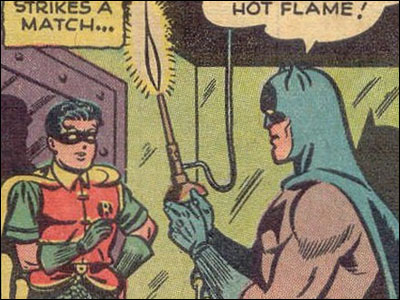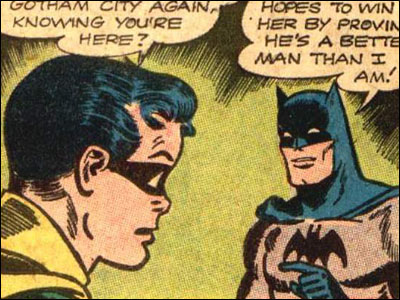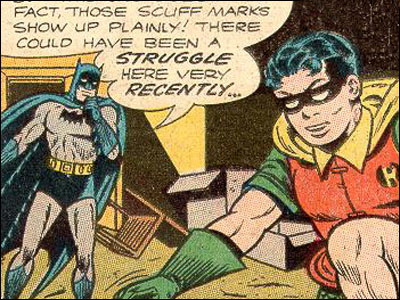This is running longer than I'd expected but hang in there. We'll get through it before Christmas. If you're joining us in progress, go back and read from the beginning. This link will take you to Part One and from there, it'll be a cinch to find your way through other chapters.
When DC did that editor-swap, there was one casualty — or what a number of readers felt was a casualty. Jack Schiff took over editing Mystery in Space from Julius Schwartz. Its contents would henceforth be done by the freelance writers and artists Schiff employed instead of the ones Schwartz had employed. World of difference. Instead of having its lead feature Adam Strange written by Gardner Fox and drawn by Carmine Infantino, it was written by Dave Wood and drawn by Lee Elias.
Wood and Elias had done fine work on other comics but Fox/Infantino was a hard act to follow and the change in the feature was jarring. It wasn't at all the same strip and it wouldn't be long before Mr. Strange was no longer appearing in Mystery in Space. And not long after that, there was no Mystery in Space. The Strange Adventures comic, which Schiff also took over from Schwartz, only fared a little better…and before long, Mr. Schiff retired or was retired.
Fox and Infantino were busy helping Schwartz retool the Batman comics. In fact, Infantino turned out to be the key to upgrading the artwork in them, giving Batman a "new look" and having the comic look like it was drawn in the sixties instead of a decade or two before.
As you may recall, DC had a firm contract with Bob Kane to produce pencil art for most of the Batman stories that ran in the Batman comic and Detective Comics, and Kane jobbed that task out to Sheldon Moldoff. Moldoff was as good as most guys who'd drawn adventure-type comics in the forties and fifties but unlike many of them, his style had not evolved. It wasn't supposed to. He was supposed to draw like Bob Kane did, way back when Bob Kane had actually drawn (with a fair amount of help) Batman comics. That was why he picked Moldoff.

Inks by Charles Paris
When Schwartz and others at DC told Kane that a change in artwork was necessary for Batman's sales, he said no at first. He liked the idea that everyone (well, most people) thought he was drawing all those comics and that was how he drew even though he wasn't drawing it. He probably, to them, kept up the fiction that he still did, albeit with assistants.
And what I'm telling you in this part here is what Kane told me when I spent some time with him when I was 16 years old. Some members of our comic book club got to go and visit him in an apartment he was then renting on Wilshire Boulevard near Westwood. We interviewed him for several hours and then he invited me back for a separate visit.
This was because I seemed to know more about comic book history than my friends did and because I was interested in writing and maybe even a little drawing. Kane, I came to realize, was interested in seeing if I could be of any possible use to him as a ghost of some sort. So he had me bring samples of my work and he eventually told me I had no future as either a writer or an artist. I more or less agreed with him even then about the artist part but I've been making my living as a professional writer now for 52 years.
In that one-on-one afternoon chat, Kane told me his life story and about what a prick or idiot every single person at DC Comics was. This was his opinion and it was not said dead sober. We were both drinking throughout — ginger ale for me, vodka for him — and boy, do I wish I'd had a tape recorder running. Still, I remember an awful lot of it…like how he kept referring to the men who had actually done Batman art as his "assistants," not his "ghosts." This included men who'd done 100% of the work on those pages. It even included artists Kane had never met who'd been hired directly by DC to do Batman stories in excess of what his contract called for him to provide.

Inks by Sheldon Moldoff
He said that he at first he resisted the idea of a "new look" Batman. The art style, he said, was part of the comic. Dick Tracy was a strip drawn by Chester Gould. Li'l Abner was a strip drawn by Al Capp. Steve Canyon was a strip draw by Milton Caniff. If the creator didn't draw it, someone else drew it in his style. (All of Kane's reference points were comic strips, not comic books…which made sense. When he was a kid thinking about becoming a cartoonist, his heroes were the strip guys. There were no comic book artists to admire then and certainly no one who got rich and/or famous in comic books.)
He also pointed out that when Alex Raymond (one of his biggest heroes, he said) died in a car accident, the syndicate didn't give his strip, Rip Kirby a "new look." They hired John Prentice, an artist whose work was to many, indistinguishable from Raymond's. "That," he said, "is how it's supposed to work."
Two things changed his mind, one being that they convinced him Batman might be in real sales trouble. The last thing Bob Kane wanted was to see the Batman comics get canceled and/or the character become a minor property. And the second thing was this: His contract with DC, as mentioned, allowed them to hire other artists to draw Batman stories as long as the work was signed "Bob Kane." They'd been doing this for years, employing guys like Jim Mooney and Dick Sprang.
Most stories that Kane handed in — the ones Moldoff actually drew — were inked by Charles Paris but DC also hired Sheldon Moldoff to ink some of them. The stories drawn by Mooney or Sprang or Curt Swan were inked by Paris or Moldoff and they didn't look that different and most readers weren't like me. Most readers didn't notice the difference so the fiction that it was all drawn by Kane went unpunctured.

Inks by Charles Paris
But DC had the right to hire anyone they chose to draw the Batman pages that didn't come from Kane, and Schwartz would be having them drawn by Carmine Infantino, Infantino was an artist who didn't draw like Kane, an artist whose work was known and recognizable to a lot of the readers. That would puncture the fiction. Kane realized that readers would say, "Bob Kane didn't draw that. That's Carmine Infantino!" Infantino would also be drawing the covers — he was probably the best guy DC had when it came to cover designs — and Kane decided he was trapped.
All he could do was (1) agree to waive the contractual "Bob Kane" signature on the stories Infantino drew and (2) try to have "Bob Kane" (i.e., Moldoff) draw in the more modern style DC wanted. The new fiction would be that Bob Kane was modernizing his approach on the stories he did. And with that, DC was poised to launch its "new look" for Detective Comics and Batman — as will be discussed here in the next (and probably next-to-last) part of this article.